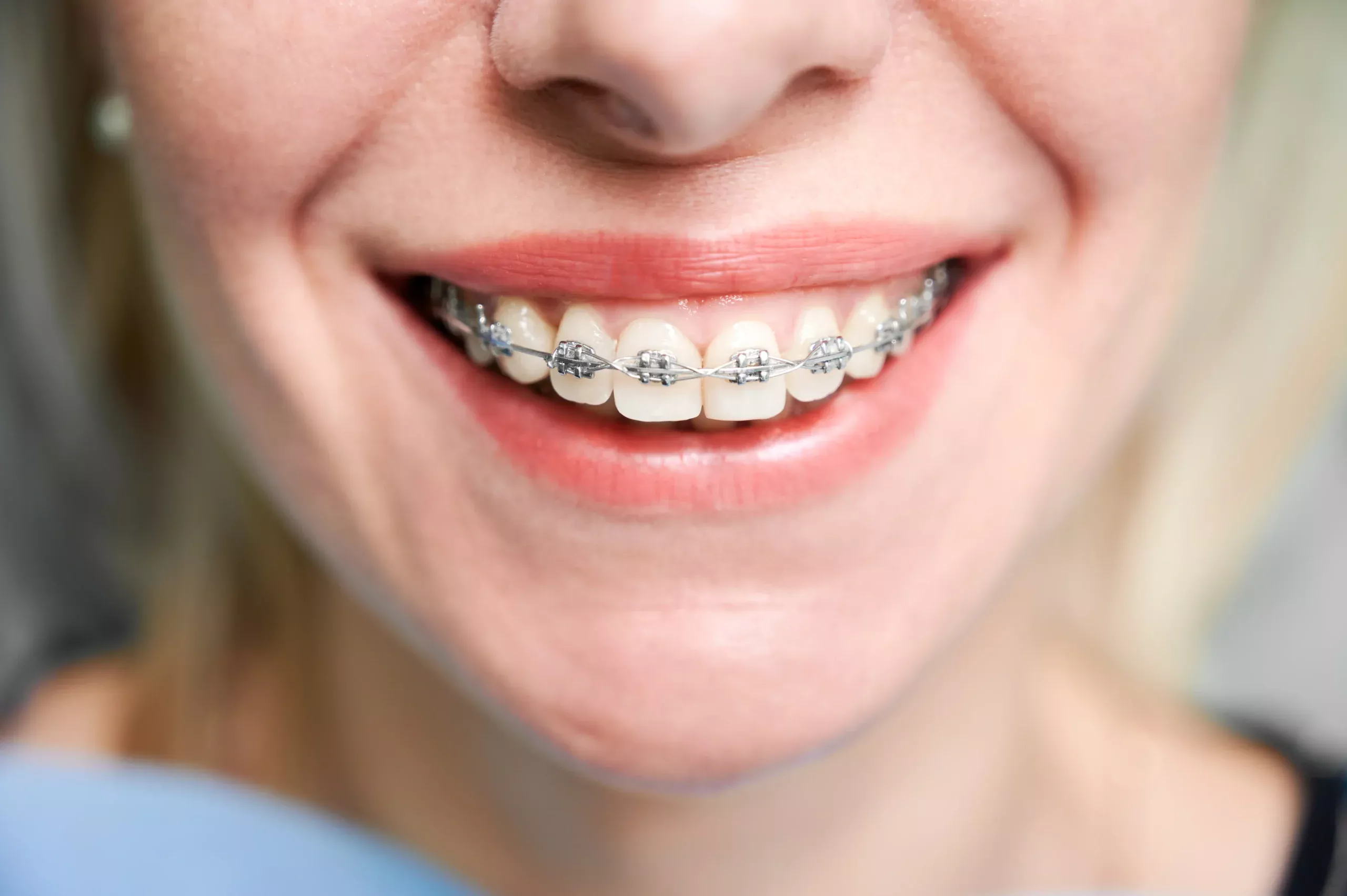Whitening your teeth is a common desire, but it becomes a bit more complex when you’re wearing braces. Achieving a bright, even smile requires careful consideration and a thorough understanding of the challenges involved. This comprehensive guide will walk you through everything you need to know about teeth whitening while undergoing orthodontic treatment, ensuring you make informed decisions that prioritise your oral health.
Why is Teeth Whitening Tricky When You Have Braces?
Braces, while effective in straightening teeth, present unique challenges when it comes to whitening. The primary issue is uneven whitening. Imagine painting a picket fence white while some of the slats are hidden behind a gate.
When you remove the gate (your braces), you’ll likely see the outlines of where it used to be. Similarly, the brackets and wires of your braces shield portions of your teeth from whitening agents, potentially leading to a patchy or uneven result.
Furthermore, some whitening products can be too abrasive for the enamel, especially when teeth are already potentially more sensitive due to orthodontic treatment. There’s also the risk of damaging the adhesive that holds the brackets to your teeth.
Therefore, attempting any whitening regimen without professional guidance can be detrimental to your overall oral health and the success of your orthodontic treatment.
How Different Types of Braces Impact Your Whitening Options
The type of braces you have significantly influences your whitening options and the potential risks involved.
- Traditional Metal Braces: These are the most common type of braces, and whitening during treatment is generally discouraged. The metal brackets and wires create significant barriers, making it nearly impossible to achieve even whitening. Attempting to whiten with these types of braces is highly likely to result in a two-toned smile once the braces are removed.
- Ceramic Braces: While ceramic braces are less visible than metal ones, they still pose the same challenges for whitening. Although the ceramic material itself might not stain as easily as the adhesive used to attach them, the overall issue of uneven whitening due to the brackets remains.
- Lingual Braces: These braces are placed on the inside surface of your teeth, making them virtually invisible. While this placement might seem to offer a slight advantage for whitening (as the front surfaces are accessible), it’s still crucial to consult with your orthodontist. Whitening products can still irritate the gums and soft tissues, and the adhesive holding the brackets can be affected.
- Clear Aligners (e.g., Invisalign): Removable aligners like Invisalign offer the most flexibility for whitening during orthodontic treatment. Your orthodontist might even recommend specific whitening products designed for use with clear aligners. However, even with aligners, it’s essential to follow your orthodontist’s instructions carefully. Overuse of whitening products can still cause sensitivity and other issues.
Safe Teeth Whitening Options to Consider While Wearing Braces
While dramatic whitening is generally best postponed until after your braces are removed, there are some safe and gentle options you can consider during treatment to maintain a brighter smile:
- Whitening Toothpaste: Whitening toothpaste can help remove surface stains caused by food and drinks. Look for a toothpaste that contains fluoride to strengthen your enamel. Remember that whitening toothpaste primarily targets surface stains and won’t significantly alter the underlying colour of your teeth.
- Whitening Mouthwash: Similar to whitening toothpaste, whitening mouthwash can help reduce surface stains. However, it’s not a substitute for brushing and flossing. Choose an alcohol-free mouthwash to avoid drying out your mouth.
- Electric Toothbrushes: Electric toothbrushes are highly effective at removing plaque and surface stains. Their oscillating or rotating heads can reach areas that are difficult to clean with a manual toothbrush, contributing to better oral hygiene and a brighter smile.
- Professional Cleaning and Stain Removal: Regular dental check-ups and professional cleanings are crucial, especially while wearing braces. Your dentist or hygienist can remove stubborn stains and plaque buildup, improving the overall appearance of your teeth and ensuring your gums stay healthy. They can also advise on the best oral hygiene practices for your specific needs.
Whitening Methods to Avoid During Brace Treatment
Certain whitening methods are strictly off-limits when you have braces due to the high risk of uneven whitening, damage to your braces, or harm to your oral health:
- Whitening Strips: These are a definite no-go with traditional braces. The strips cannot conform to the shape of your teeth with the brackets and wires in place, leading to a very uneven and unsatisfactory result.
- Whitening Gels and Trays: While custom-made trays can sometimes be used after braces are removed, they are not suitable for use during treatment. The gel will not reach the areas covered by the brackets, creating a stark contrast in colour once the braces are off.
- DIY Whitening Methods: Avoid any DIY whitening trends you might find online, such as using baking soda, hydrogen peroxide, or lemon juice. These methods are often ineffective and can be extremely harmful to your enamel, gums, and the adhesive holding your braces. They can also interfere with your orthodontic treatment.
The Ideal Time for Teeth Whitening: After Braces Removal
The most effective and recommended time to pursue significant teeth whitening is after your braces have been removed. Once your teeth are free from brackets and wires, whitening products can reach all surfaces evenly, ensuring a consistent and beautiful result.
Your dentist or orthodontist can recommend professional whitening options, such as in-office bleaching or custom-made whitening trays. These professional methods use stronger whitening agents and are closely monitored to minimise sensitivity and maximise results.
Maintaining Excellent Oral Hygiene
While you wait to whiten your teeth after your braces are removed, maintaining meticulous oral hygiene is paramount. This not only contributes to a healthier mouth but also helps minimise staining and sets the stage for successful whitening later on.
- Brushing: Brush your teeth at least twice a day, using a soft-bristled toothbrush and fluoride toothpaste. Pay close attention to cleaning around your brackets and wires, using a gentle circular motion.
- Flossing: Flossing can be challenging with braces, but it’s crucial for removing plaque and food particles from between your teeth and under the gum line. Use floss threaders to help you navigate around the brackets and wires.
- Interdental Brushes: These small brushes are excellent for cleaning between your teeth and around your brackets, reaching areas that regular floss might miss.
- Regular Dental Check-ups: Continue to visit your dentist for regular check-ups and cleanings. They can monitor your oral health, remove any stubborn stains, and provide personalized advice on maintaining your oral hygiene during orthodontic treatment.
Bottomline
Whitening your teeth with braces is a journey that requires patience and professional guidance. Resist the temptation to try quick fixes or DIY methods, as these can often do more harm than good. Consult with your orthodontist or dentist before attempting any whitening regimen, and always follow their recommendations carefully. By prioritising your oral health and working closely with our experts at Waldron Dental, you can achieve a healthy, bright, and even smile once your braces are removed.













